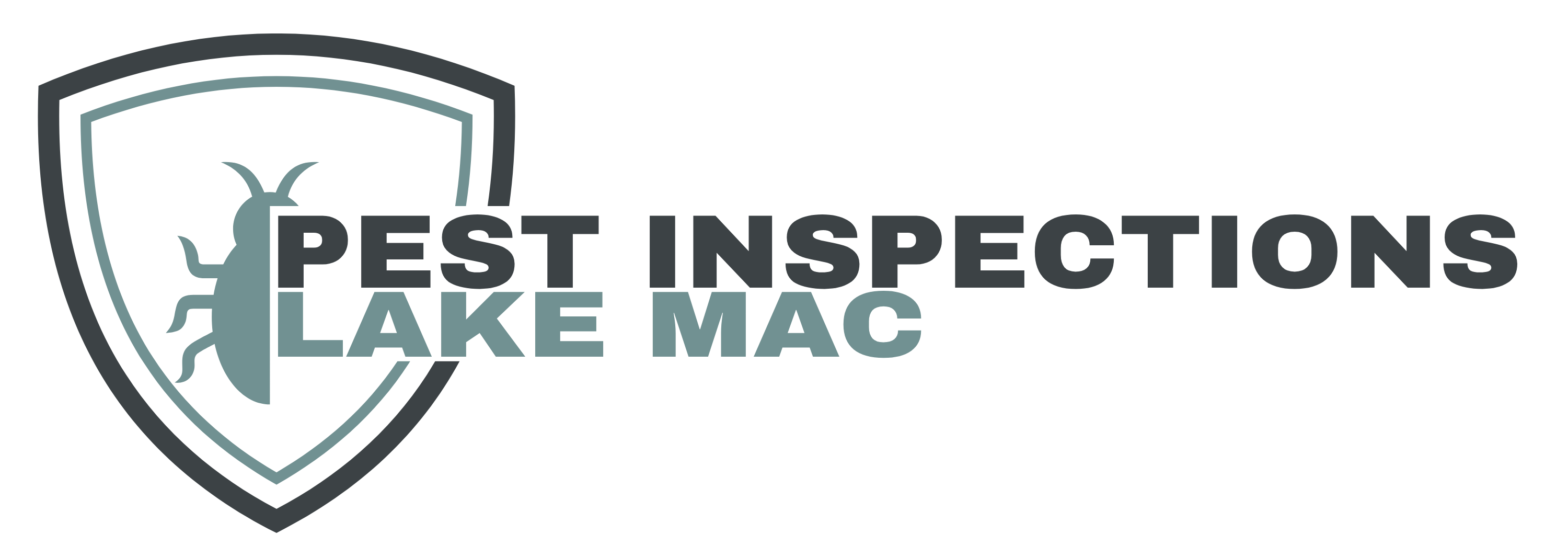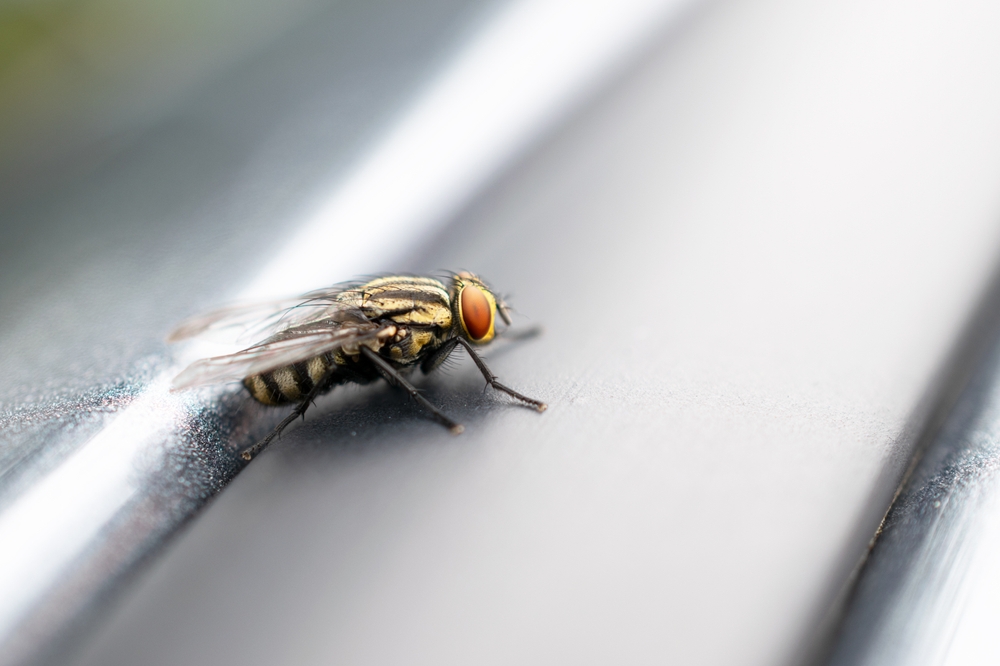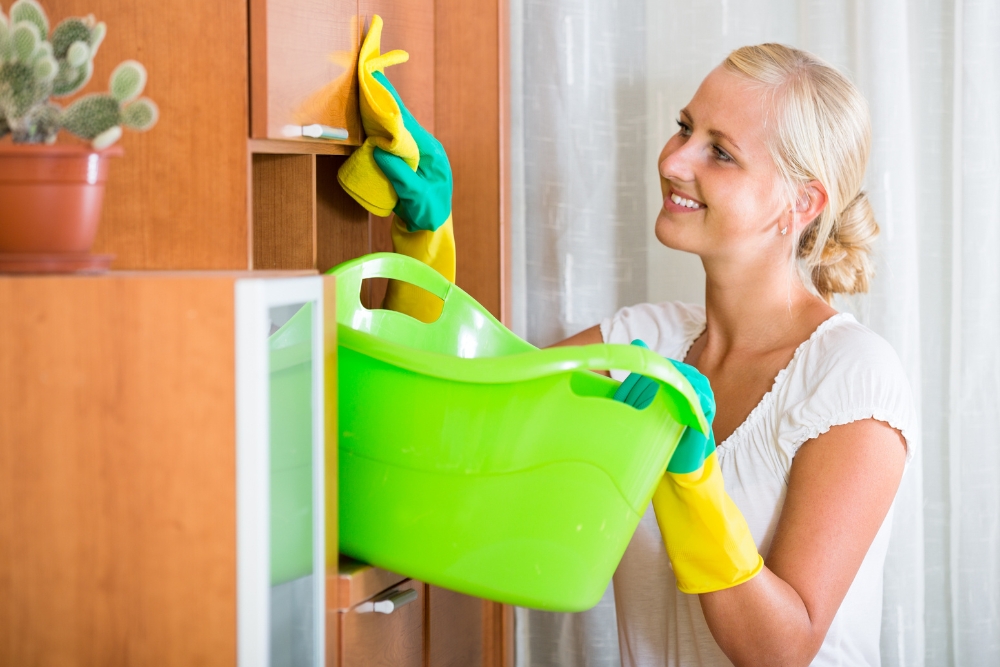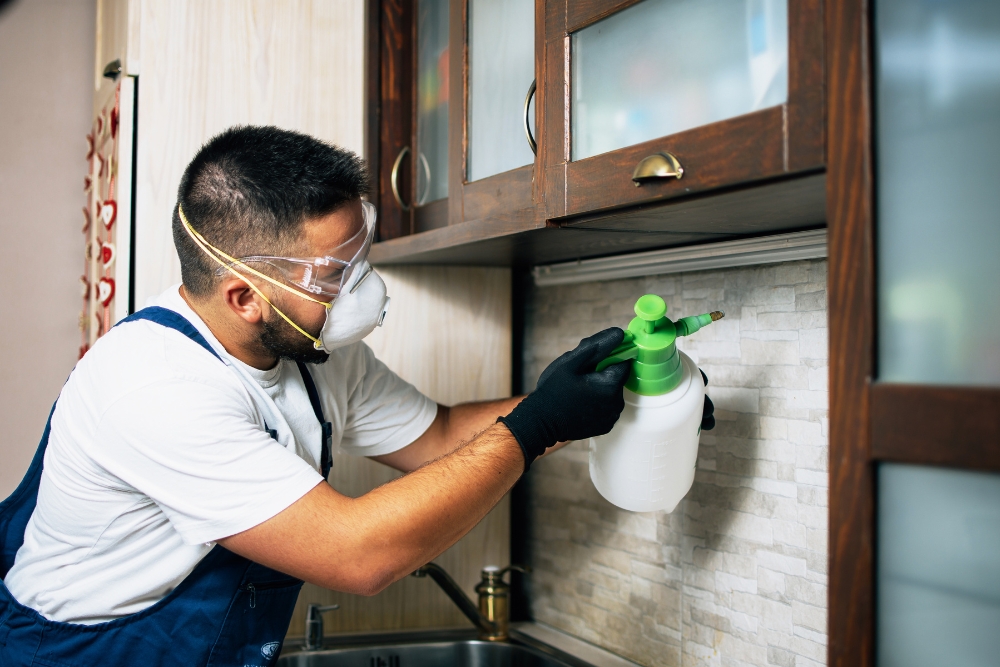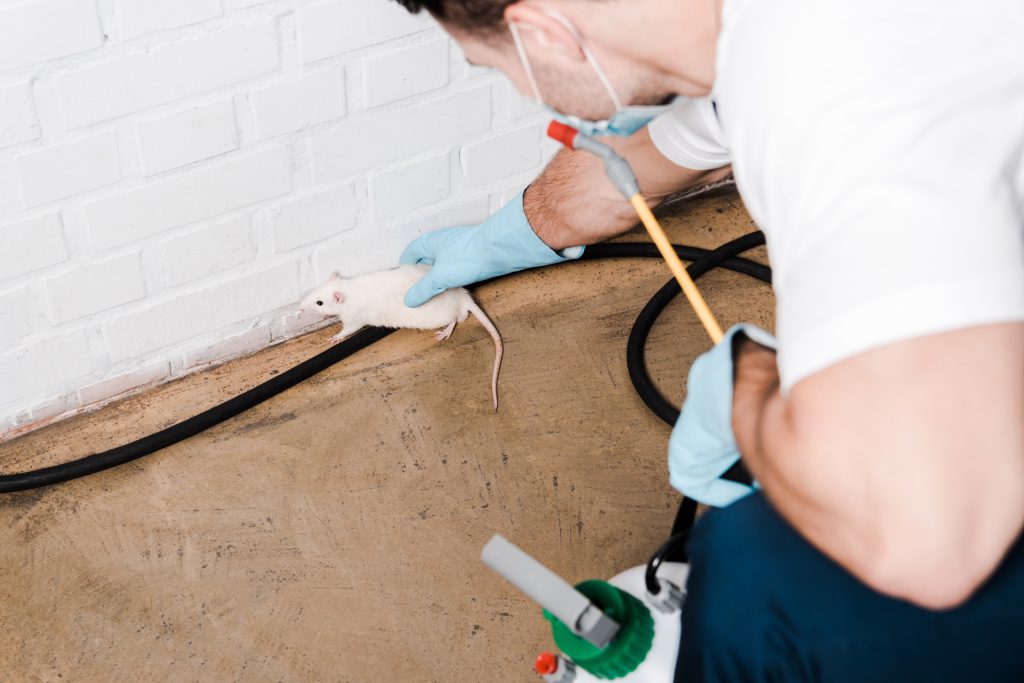Assessing the danger of fly infestations in homes starts with understanding what indoor flies are and identifying their risks. Flies can bring diseases like salmonella and E. coli into our spaces, contaminating food and surfaces that we touch every day.
Spotting signs of an infestation early is key to prevention; this includes noticing adult flies, encountering maggots, or hearing buzzing sounds around our homes. To keep these pests at bay, it’s essential to seal up openings around doors and windows, cover all food items properly, and ensure rubbish bins are tightly sealed.
Certain attractants can increase the chances of a fly invasion in Australian homes, such as open rubbish bins, uncovered meals, and specific outdoor lighting. If do-it-yourself methods fall short in controlling the situation, calling in pest control professionals might be necessary for effective resolution.
We’ll explore how easy steps like regular cleaning and proper waste management can significantly reduce health risks linked to fly infestations. Stay tuned!
Key Takeaways
- Flies pose health risks by carrying diseases like salmonella and E. coli, which can contaminate food and surfaces in our homes. Regularly cleaning and managing waste properly can help minimise these risks.
- Identifying fly infestations early is crucial. Signs include seeing adult flies, and maggots, or hearing buzzing sounds around the house. Taking quick action at these signs can stop flies from spreading diseases.
- To prevent flies from invading, seal up any openings around doors and windows, cover all food items and manage rubbish correctly with tightly sealed bins. Adding screens to windows and using door sweeps also keep flies out.
- Certain factors attract flies into homes, such as open rubbish bins, uncovered food, and mercury vapour lamps used for outdoor lighting. Being mindful of these can reduce the likelihood of a fly problem.
- If DIY methods don’t control the fly issue, it’s important to seek professional help from pest control experts who have effective strategies for getting rid of indoor fly infestations for good.
What Are Indoor Flies?
Indoor flies, including various species like the common house fly and the pesky fruit fly, are more than just a nuisance; they are potential carriers of a wide array of disease-causing pathogens. By landing on food, utensils, and surfaces within the home, these flies can easily transmit bacteria and viruses, posing significant health risks to inhabitants.
The house fly, known for its ability to quickly multiply in unsanitary conditions, can spread diseases such as salmonella and E. coli. Similarly, fruit flies, attracted to fermenting fruits and other sweet, organic materials, can contaminate food items with bacteria from previously visited decaying matter.
Understanding the behaviour and potential dangers associated with these indoor fly species is crucial for implementing effective control measures and safeguarding health.
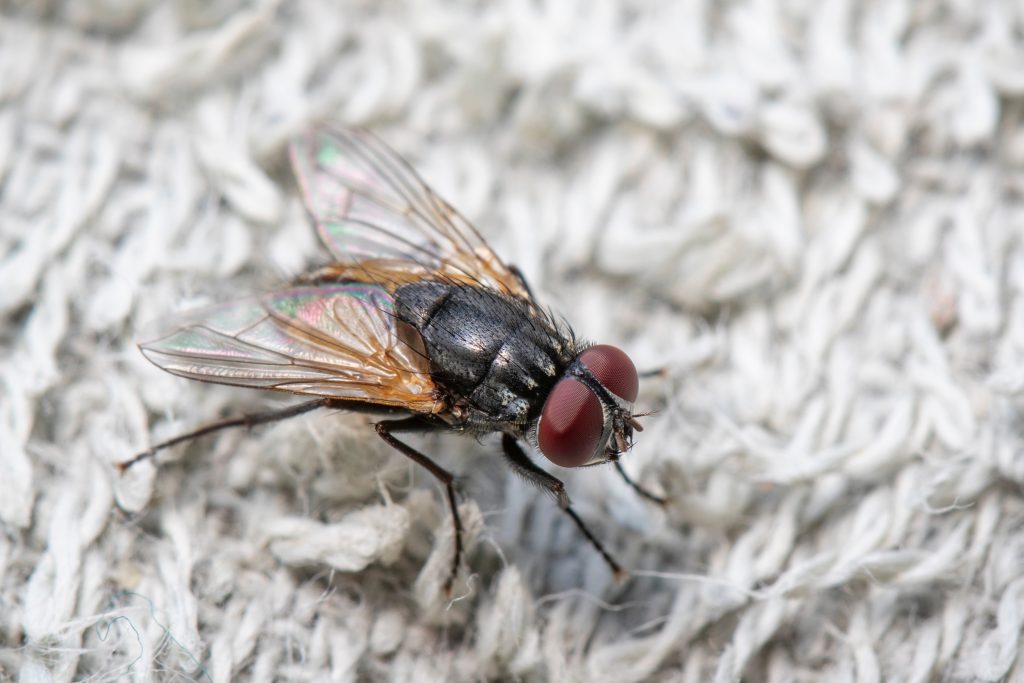
Types of commonly found indoor flies
We often find ourselves battling fly infestations in our Australian homes. Identifying the types of flies invading our spaces is crucial for effective control and prevention.
- House Flies – Known for their persistent presence around waste and food, house flies pose significant health risks by spreading diseases.
- Fruit Flies – Small yet troublesome, fruit flies flock to ripe fruits and vegetables, making kitchen areas their favourite breeding grounds.
- Drain Flies – With a preference for damp environments, drain flies lay their eggs in the sludge inside drains, causing nuisances in bathrooms and kitchens.
- Bottle Flies – Recognisable by their metallic sheen, bottle flies are attracted to decaying meat and garbage, indicating a high level of contamination when present indoors.
- Flesh Flies – Larger than house flies, flesh flies breed in decaying meat or dead animals, often signalling unseen pest issues within the home.
Dealing with these pests requires understanding what attracts them to our homes.
Risks associated with indoor flies
Indoor flies pose health risks, including the potential spread of diseases such as salmonella and E. coli. Flies are known to carry pathogens on their bodies and may transfer these harmful bacteria to surfaces and food in your home, increasing the risk of food contamination and illness.
Additionally, fly infestations can exacerbate allergies and asthma symptoms due to their shed skin, feces, and saliva. Indoor fly infestations can lead to serious health concerns through the transmission of harmful bacteria.
Identifying Indoor Fly Infestations
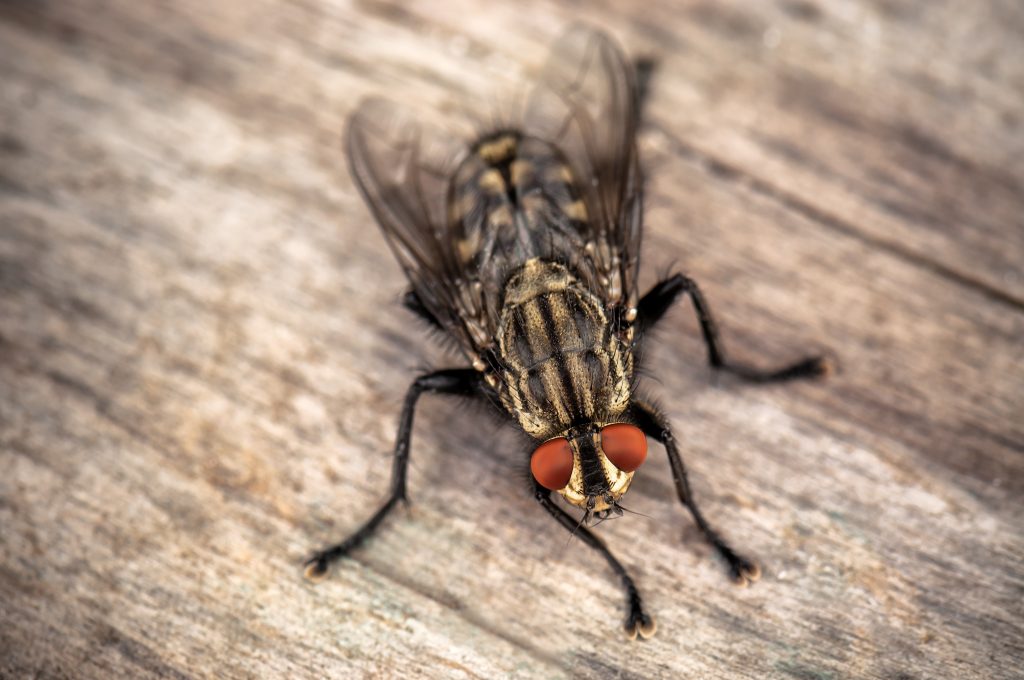
Indoor fly infestations are unmistakable when you know the signs to look for, which include not only the sight of adult flies frequently around but also the discovery of maggots – their larvae – in areas like garbage bins, behind appliances, or anywhere food waste may accumulate. The persistent buzzing sounds, especially in areas of the house like kitchens or where pets are fed, can also suggest an ongoing infestation.
Early identification of these signs is crucial, as it allows for prompt action to be taken to mitigate the situation before it worsens. Taking immediate steps to clean infested areas, properly dispose of waste, and employ fly control measures can significantly reduce the fly population, preventing further infestation.
Understanding and responding to these early indicators helps maintain a healthier living environment, free from the nuisance and potential health risks associated with flies.
Signs of adult flies
Adult flies in the house can indicate a potential infestation. Spotting large numbers of flies indoors, especially around food and rubbish, may suggest an infestation. Adult flies landing on surfaces or buzzing loudly can also be signs of a fly issue.
Identifying adult fly species is crucial to understanding the extent of an infestation. Common types include houseflies, blowflies, and fruit flies. These pests pose health risks due to their potential to spread diseases like salmonella and E.coli through contact with contaminated surfaces or food.
Regular monitoring of adult flies is essential for early detection and effective control measures.
Presence of maggots
Maggots are a sure sign of an indoor fly infestation. These small, white larvae can often be found near decaying organic matter such as food waste or even dead animals. They thrive in warm, moist environments and quickly grow into adult flies, perpetuating the infestation cycle within homes.
Proper disposal of food waste and regular cleaning can help prevent the presence of maggots and curb indoor fly populations.
The presence of maggots is a clear indication of a potential indoor fly infestation. It is vital to tackle the root cause by eliminating their breeding grounds to prevent further infestations from occurring.
Buzzing sounds
Flies can produce a distinctive buzzing sound, especially when they are flying around. This noise is often one of the first indicators of a potential fly infestation in your home. If you start to hear this buzzing sound more frequently, it’s essential to investigate and address the issue promptly.
The presence of buzzing sounds could signal an underlying problem that needs attention, such as open food sources or breeding sites within your property. Listening to these sounds can help homeowners and inspectors identify and tackle fly infestations before they become more severe.
Identifying the source of buzzing sounds in your home is crucial for effective pest control measures. Should you detect these noises, consider exploring areas where flies may be congregating, such as near rubbish bins or damp organic matter.
Factors Attracting Flies to Homes
Flies are instinctively drawn to homes for various reasons, with open rubbish and trash cans, uncovered food, and the glow of mercury vapour lamps being among the primary attractions. These elements not only lure flies into Australian households but also offer them ideal breeding grounds, encouraging rapid population growth.
Open containers of waste and exposed food items emit odours that are irresistible to flies, signalling a ready supply of food sources and suitable sites for laying eggs. Additionally, the bright light from mercury vapour lamps can attract flies during the night, further increasing their presence around homes.
Consequently, managing waste effectively, covering food properly, and reconsidering outdoor lighting choices are essential steps in mitigating fly attraction and preventing infestations within households.
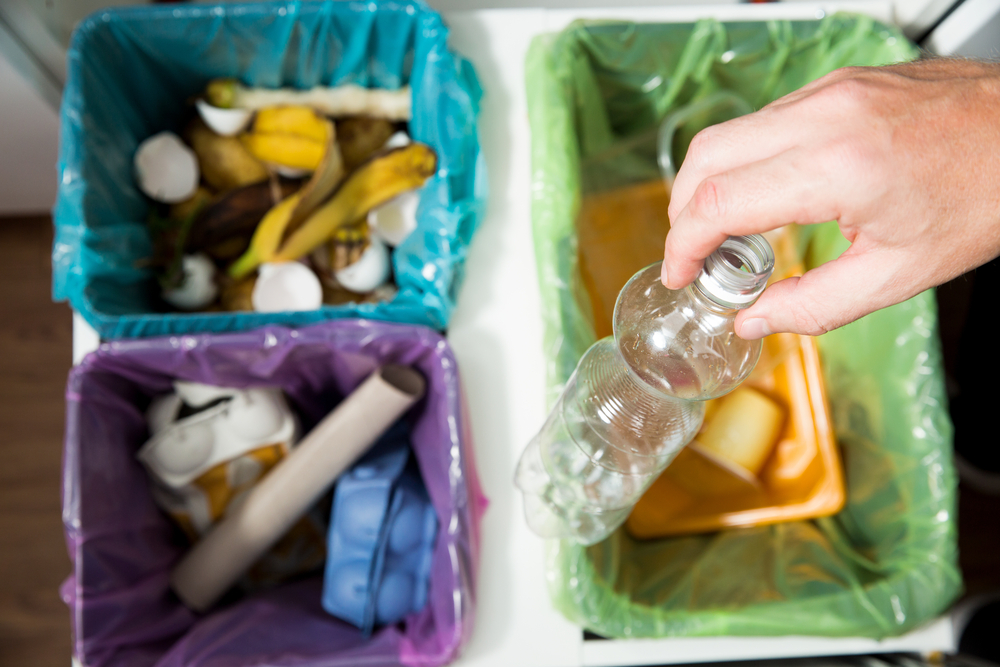
Open rubbish and trash cans
Flies are attracted to open rubbish and trash cans. Food waste is a breeding ground for flies, which poses health risks and leads to infestations. Proper management of rubbish and trash can significantly reduce fly populations in Australian homes. Ensure that all bins have tightly sealed lids, preventing access for flies looking to breed or feed on organic matter.
Keeping the garbage area clean and regularly disposing of waste will also discourage flies from congregating around outdoor bins. It’s crucial to take these preventive measures seriously to avoid potential fly infestations in residential areas.
Uncovered food
Leaving food uncovered attracts flies. Flies are drawn to exposed food, where they can lay eggs and feed on organic matter. It’s crucial to cover all food items, especially fruits, meat, and dairy products, to prevent fly infestations in homes. Regularly disposing of perishable items and keeping surfaces clean also helps eliminate attractants for these pests.
Homeowners should be mindful of the potential risk of an infestation when storing uncovered food. Building inspectors and pest inspectors should also emphasise the importance of proper food storage during their assessments to prevent and control indoor fly populations.
Mercury vapour lamps
Mercury vapour lamps are often used for outdoor lighting, but they can attract flies when placed near entry points in homes. The ultraviolet light emitted by these lamps is irresistible to flies, drawing them closer to the house.
This can contribute to indoor fly infestations if precautions are not taken. Proper placement and management of mercury vapour lamps can help reduce the risk of attracting flies into Australian households.
In addition to unsecured rubbish and food sources, the presence of mercury vapour lamps near entrances could inadvertently invite flies inside our homes. Awareness of this aspect is crucial for homeowners, building inspectors, and pest inspectors when assessing potential factors that may lead to indoor fly infestations.
Prevention and Control of Indoor Flies

Effective control of indoor flies involves a multi-faceted approach that begins with sealing any potential entry points such as cracks around windows, doors, and other openings to prevent flies from accessing indoor spaces. Eliminating moisture and breeding sites, particularly in areas like kitchens and bathrooms where flies are attracted to damp conditions, is crucial in disrupting their lifecycle.
Regular cleaning routines that include wiping down surfaces, vacuuming, and promptly addressing spills can greatly reduce the attractions that draw flies indoors. Proper management of trash, including using bins with tightly fitting lids and regular disposal, further minimises the appeal of your home to these pests.
Additionally, the strategic use of traps and targeted drain treatments can effectively capture or eliminate flies that have already infiltrated your home, providing a comprehensive defence against these unwelcome invaders.
Sealing openings
Sealing openings in your home is crucial for keeping flies out. Use caulk to seal cracks and gaps around windows and doors. Install door sweeps to create a tighter seal at the bottom of exterior doors.
Also, consider adding screens to windows and vents to prevent flies from entering your home while allowing fresh air circulation. Creating an inhospitable environment for flies by sealing openings helps maintain a fly-free home.
Eliminating moisture and potential breeding sites
To prevent fly infestations, regularly inspect and repair any leaky pipes or faucets. Dispose of standing water in dishes under potted plants and eliminate potential breeding sites by keeping gutters clear of debris.
Store firewood away from the house to avoid moisture near exterior walls. Regularly clean pet areas and keep litter boxes dry, ensuring no moisture buildup occurs.
Regular cleaning
Regular cleaning is crucial in the battle against indoor fly infestations. We must regularly clean up spills, crumbs, and food remnants to eliminate attractants for flies. Dispose of rubbish promptly and ensure that waste bins are tightly sealed to prevent flies from accessing potential breeding sites.
Regularly cleaning spaces with damp or moist areas such as drains, bathrooms, and kitchens also aids in reducing fly breeding grounds. By implementing these cleaning practices consistently, we can significantly reduce the risk of indoor fly infestations.
In addition to general cleanliness, it is essential to routinely inspect and clean potential fly breeding sites around your property such as compost heaps or decaying organic matter outdoors.
Proper rubbish and trash can management
Properly managing rubbish and dustbins is crucial in preventing fly infestations. Ensure that all bins have tightly fitting lids to prevent flies from accessing the waste. Regularly empty and clean the bins to remove any food residue or organic matter that may attract flies.
Additionally, consider placing garbage in sealed bags before disposing of it to further deter fly activity. Proper management of rubbish and dustbins plays a significant role in reducing potential breeding sites for flies.
It’s also important to regularly check for any wear or damage on the bins’ lids and replace them if needed, as even small openings can allow flies to access the waste material inside.
Using traps and drain/septic treatments
After properly managing rubbish and dustbins, we can further control indoor flies by using traps and treatments for drains and septic systems. Placing fly traps in strategic locations around the house can help capture adult flies, reducing their numbers.
Meanwhile, regular use of drain and septic treatments can eliminate organic material where flies lay eggs, cutting off their breeding grounds.
Frequent maintenance of these traps and treatments is necessary to ensure they remain effective in controlling indoor fly populations. By consistently deploying these measures, homeowners, building inspectors, and pest inspectors can take proactive steps to minimise the risk of fly infestations in homes without relying solely on insecticides.
Knowing when to seek professional help
If you notice a persistent and worsening fly infestation despite your best efforts to control it, it’s time to call in professional pest control services. Pest inspectors can assess the severity of the infestation and identify any underlying causes that may be contributing to the problem.
Building inspectors are equipped to identify structural issues that could be attracting flies to your home. Seeking professional help is crucial for effectively addressing severe fly infestations and preventing further health risks associated with these pests.
Homeowners should consider seeking professional help when preventive measures and DIY interventions fail to curb the fly infestation. Pest control experts have specialised knowledge and access to insecticide alternatives for the effective eradication of fly nests.
Call Us!
Understanding the risks associated with indoor fly infestations is crucial for homeowners and building inspectors. By recognising the signs of an infestation and identifying potential attractants, it becomes easier to take proactive measures.
Implementing prevention and control strategies such as sealing openings, regular cleaning, and proper rubbish management can significantly reduce the risk of fly infestations in homes.
These practical methods are not only efficient but also essential for maintaining a healthy living environment. Applying these strategies could lead to substantial improvements in pest control strategies.
For further guidance or professional assistance, individuals should consider consulting pest inspectors who offer tailored solutions for effective fly management.
